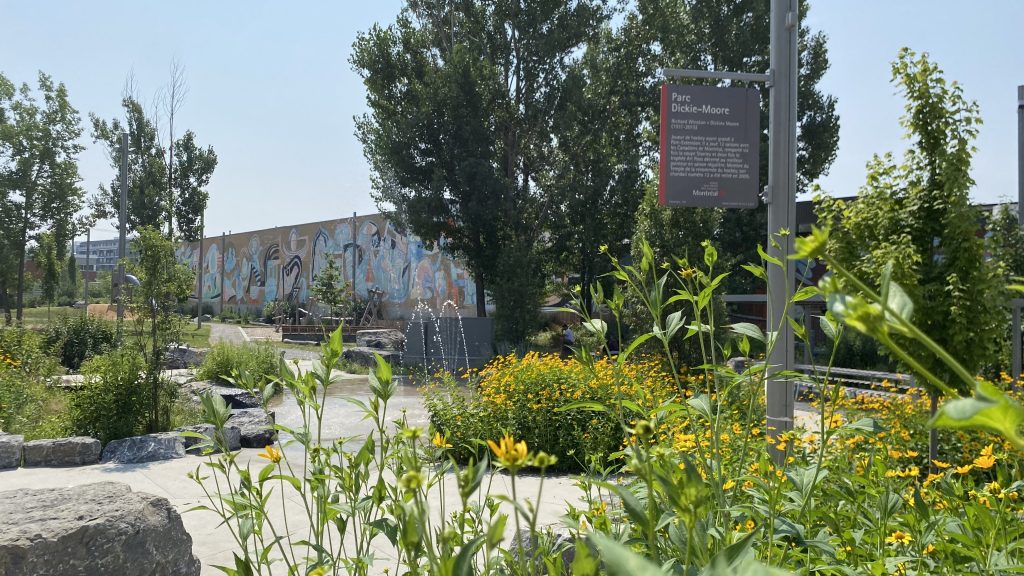After Montreal was hit with record-setting rainfall Sunday, it’s clear flooding is a problem for some of the city’s basements and streets.
Officials feel “sponge parks” could be part of the solution. They’re designed to absorb and redirect stormwater instead of letting it overwhelm sewers and water collectors.
There are seven sponge parks across the city. One of those is Dickie Moore Park in Parc-Extension, a 4,000-square metre park built in 2022.
It’s also a local favourite for cooling off from this summer’s sweltering heat — for young kids in the water, but also for adults taking their lunch breaks in shaded areas. The park answers a critical need for green spaces in the neighbourhood.
“We have the water jets that allow us to go out every day with the children when the weather permits,” said Simona Zafieu, a caregiver at a nearby CPE visiting the splash pad area with the over 20 children she and her colleagues care for. “For a long time we were running to parks that are really far, and it was too tiring for the children with the distance and the summer heat. But this, it’s really wonderful.
“I think the best investment the city could have made was really this park here.”
“Those kind of parks should be, and not only the parks, but sidewalks and streets even, should all be having sponge qualities to make sure that we can manage rainwater when it comes,” added Étienne Bienvenu, a colleague of Zafieu’s.
“I think it’s the most amazing idea ever because we would need the whole city to be a sponge.”
“Definitely in a couple of days, like every week we come here in the splash pad,” added Farooq Ahmed, a father visiting the park with his 11-year-old son and seven-year-old daughter. “So this park really helps us to actually spend more time with the kids also.”
The City of Montreal has promised it would build 30 more sponge parks by the end of 2025 to combat flooding. Last summer, the administration announced the building of its largest sponge park yet in Verdun, which is still underway.
It’s also looking to build 400 more sponge sidewalks – up from the already existing 800.
Experts, like McGill civil engineering professor Susan Gaskin, say sponge parks help the city by slowing down a downpour before it can overwhelm the sewage system.
“What we see in a situation like last Sunday, when we have the very heavy rainfall, is the drains just don’t have the capacity to take that water and evacuate it,” explained Gaskin. “And so we get puddles, and we get ponds where we don’t want it, like underpasses, people’s basements, and things like that.”
Dickie-Moore Park is built at a lower level than neighbouring streets such as De L’Épée Avenue, so that during torrential rains, water is redirected into the park by way of gentle slopes. The park features a rain garden: green spaces that allow rainwater to infiltrate the ground directly. Plants and furniture in the park are adapted to be able to be immersed in water.
However, when not in a period of heavy rain, the park is functional and the slopes are still easy to walk on. There are splash pads, clearing space, climbing structures and a slide.
“But as you probably noticed, when the rain comes down really heavily, then the soil still can’t absorb it at that rate, and it will still, it will still pond or run off,” said Gaskin.
Related:
As summer thunderstorms become more intense, Gaskin says sponge parks alone won’t be enough. She says measures like flood barriers outside basement garages may become a part of life to fight floods.
Montreal has already seen as much rain as it usually receives for the whole month.
“If these events are going to be getting larger and larger, we probably can’t necessarily keep up with the extremeness of the events,” said Gaskin. “We have to think about mitigating the damage that occurs.”




